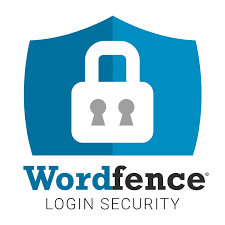Website Security Best Practices
As your website starts to improve in the search rankings you get more attention. Not all of that attention is good, in fact we’ve noticed a 35% increase in spam and cyber attacks on websites that rank on the first three pages of the search results. Meaning website security is of paramount importance for any business in Canada or North America. In the past five years its been easier to protect yourself with a number of tools and processes to ensure your website is safe for you and your audience. Let’s explore some website security best practices and ways to fortify your online defenses.
Having built and managed over 250 websites our team are at the top of website security and maintenance protocols.
To find out more on how we can help businesses like your across Canada and North America visit our web design services page.

Website Security Best Practices
The most common issue we come across is websites that arent maintained. Here are a list of our best practices to keep your site healthy and safe from attack.
1. Keep Software and Plugins Up to Date: Regularly update your website’s core software, content management systems (CMS), and plugins to their latest versions. Updates often include security patches that address vulnerabilities discovered in previous versions. Stay vigilant and ensure you have a process in place to keep all software components up to date.
2. Use Strong and Unique Passwords: Strengthen your website’s security by using strong, complex passwords for all user accounts, including administrators and contributors. Avoid using easily guessable passwords and consider implementing two-factor authentication (2FA) for an additional layer of protection.
3. Enable HTTPS with SSL/TLS: Protect sensitive data transmitted between your website and users by enabling Hypertext Transfer Protocol Secure (HTTPS). HTTPS encrypts data using Secure Sockets Layer (SSL) or Transport Layer Security (TLS) protocols, ensuring secure communication and mitigating the risk of data interception and tampering.
4. Implement Web Application Firewalls (WAF): Utilize a web application firewall to protect your website from malicious traffic and common cyber threats. A WAF acts as a shield between your website and potential attackers, filtering out malicious requests and providing an added layer of defense.
5. Regularly Backup Your Website: Perform regular backups of your website’s files and databases. Store backups in secure, off-site locations, and test the restoration process periodically to ensure data integrity. In the event of a security incident or data loss, backups are essential for restoring your website to a secure state.
6. Understanding Site Traffic: Seeing where your traffic is coming from whether its potential threats or general users looking to visit your site. Understanding who visits your site can help potentially block certain countries or regions should threats take place. You can check out our article on understanding your website traffic for more information.
What are 3 ways to safeguard against cyber attacks?
Prevention is key to cyber attacks you can definitely safegaurd your website and reduce the chance damage or loss of intellectual property. Here are our three main ways to safegaurd your website.
1. Perform Regular Vulnerability Assessments: Conduct regular vulnerability assessments and security audits to identify potential weaknesses in your website’s infrastructure, code, and configurations. Responsive designed websites have more code and more adaptive places that can be of concern. Penetration testing can help uncover vulnerabilities that could be exploited by attackers. By addressing these vulnerabilities promptly, you can proactively strengthen your website’s security posture.
2. Implement Robust User Authentication: Implement strong user authentication mechanisms to ensure that only authorized individuals can access sensitive areas of your website. Utilize secure authentication protocols, such as OAuth or OpenID Connect, and consider implementing additional security measures like biometric authentication or hardware-based security keys.
3. Educate and Train Your Team: Cybersecurity is a shared responsibility. Educate your team about common security threats, best practices, and protocols. Train employees to recognize and respond to potential phishing attempts, social engineering tactics, and other cyber threats. Foster a culture of security awareness and ensure that everyone understands their role in safeguarding your website and data.


How to check if your site is secure.
Ensuring your site is secure and has the correct safety protocols such as a SSL certificeate not only build trust with your audience but they tell search engines that you protect peoples personal information which is a signal that helps build authority.
As I mentioned “HTTPS” at the beginning of its URL is that signal. The “S” stands for secure and indicates that the website has an SSL/TLS certificate installed, ensuring that data transmitted between the website and users is encrypted and protected.
You can check the padlock symbol which provides additional details about the website’s security and the validity of its SSL/TLS certificate.
You can use tools like Wordfence for WordPress that will not only run scheduled scans but give you notifications on your sites security. It will also show any attacks that have taken place whether its via the admin dashboard or a brute force attack.
Website security is one of the most important things you can do along with regular backups and maintenance.
If you’d like to see how we can help your business protect your website or run scheduled maintenance visit our web design page.

Written by Scott Ballam
More From This Category
Does Your Website’s Design Matter for Local Orleans Businesses?
Does Your Websites Design Matter? What Do Users Expect? Visual Appeal & Brand Message Okay so we know that Orleans is a small suburb of Ottawa. But competition is high when it comes to local business. Everyone strives to make their mark in a competitive market,...
Does Your Website’s Design Matter for Local Orleans Businesses?
Does Your Websites Design Matter? What Do Users Expect? Visual Appeal & Brand Message Okay so we know that Orleans is a small suburb of Ottawa. But competition is high when it comes to local business. Everyone strives to make their mark in a competitive market,...
Does Your Website’s Design Matter for Local Orleans Businesses?
Does Your Websites Design Matter? What Do Users Expect? Visual Appeal & Brand Message Okay so we know that Orleans is a small suburb of Ottawa. But competition is high when it comes to local business. Everyone strives to make their mark in a competitive market,...
0 Comments
Head Office
1472 Comfrey Crescent, Orléans,
ON K4A0L8
Phone: (613) 581-0490
Directions: Location
Proudly Serving
- Ontario
- Quebec
- United States
- United Kingdom
Quick Links
- Social Media Advertising
- Web Design
- Google Ad Management
Privacy Policy
Let’s Work Together!
If you are looking to strategically build your brand we have the knowledge to show you how. Whether it’s on a consulting basis or perform the work ourselves, we are building brands the right way.

0 Comments